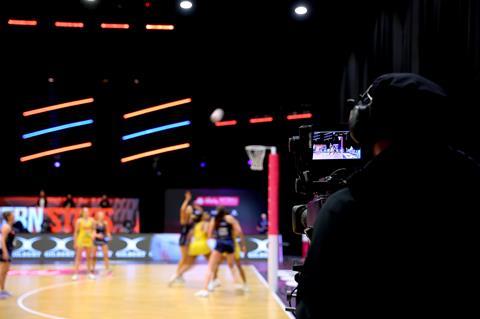Colin Moran, VP of production products at LTN, takes a look at the options for mid-to-lower tier sport competitions

The sports rights landscape has changed rapidly in recent years.
Ambitious new market players have entered the equation to compete with established sports broadcasters for premium rights. Tech giants like Apple, Amazon, and Google’s YouTube are investing heavily in top tier sports to secure viewers and grow ad revenues, while traditional media organisations are experimenting with new business models and rights-buying strategies to keep consumers signed up for video services.
In a fiercely competitive landscape, media organisations need to think more creatively about their international distribution strategies to widen their footprint and engage new consumers. As a result, niche sports such as bowling, table tennis, and skateboarding are becoming more accessible and popular for wider audiences. Today, sports leagues and federations are sitting on a golden opportunity to take control of their content distribution strategies to reach new audiences and capture monetization streams previously unavailable to them.
Making sure the ball is in your court
Mid-to-lower tier sport leagues and federations have traditionally been hungry and willing to partner with a large media organisation to hand over exclusive ownership of their content rights - in many cases, including the production itself. While bulk-selling content rights in this way offers a quick and straightforward way for sports brands to grow their audience and their media visibility, they’re leaving money on the table if they don’t consider alternative content distribution strategies that keep them in the driver’s seat. By retaining control over production and pursuing a more segmented distribution model with multiple rights buyers, sports brands can monetize their content in their way, keep creativity front and centre, and seamlessly deliver their content across platforms and geographies in a ‘spiderweb’ effect.
Maintaining ownership of production and controlling rights at the source enables leagues to try out new production techniques while maximising efficiencies through automated technologies. In an ever-shifting and uncertain sports market, it makes sense from a business and technological standpoint to keep creative control over your premier live sports assets.
Identifying the right strategy
Time-to-market is critical. But in today’s fast-paced sports market, leagues and federations must also think hard about the right distribution strategy to achieve the best long-term business goal. New creative technologies and a feverish rights buying market mean that organizations are sizing up more potential monetisation avenues than they could have ever imagined. Looking out across a sea of choice can be overwhelming. Amid the chaos, brands need to think strategically about the optimal ways to create, distribute, and monetize their content, and there is no one-size-fits-all equation.
The sports market is far from being immune to current economic headwinds. Identifying price points that work best for your organization amid ongoing commercial challenges from rights buyers and broadcasters can be difficult. Having a clear vision for securing ROI is a top priority. Adopting highly efficient IP-based technology workflows to underpin your strategy can help make your vision a reality.
Free ad-supported streaming TV continues to surge in popularity, along with increased sports consumption across emerging OTT and other digital platforms. Immersive live betting experiences are unlocking a breadth of new monetisation opportunities and presenting considerable technology challenges for content providers. New technologies are making it more affordable and simpler for leagues to launch their own direct-to-consumer (D2C) platforms, increasingly deploying D2C offerings as part of a hybrid sports content distribution strategy.
With a huge number of potential routes to market and new business models to explore, content owners need maximum flexibility baked-in throughout video production workflows to be able to capture any opportunity. Leagues need to start from the end-user perspective and work backward from there, exploring new creative production techniques and content versioning capabilities - with the fan always front of mind - helping them deliver a greater amount of customised content experiences with maximum efficiency.
Data-first blueprint for sports streaming success
Achieving an effective spiderweb model for live sports content distribution requires efficient customization and localization at scale. Scale is critical in today’s market to help drive ROI, but it also requires complex and highly robust technological infrastructure. Sports leagues and federations can harness IP-based, multicast-enabled video transmission and digital live event versioning solutions to creatively tailor their production for any device, platform, or region.
Cloud-enabled live event versioning services are set to change the game in live sports distribution. Rights owners are now seamlessly preparing content with watermarking, slating, video insertion, and SCTE triggers for localised advertising while deploying remote announcers or voice-overs in the local language. Along with adding custom graphics, active video clips, highlights, and decorated event recordings, content providers have access to all the tools required to deliver customized viewing experiences while maximizing monetisation.
Aside from customised video elements, such as platform-specific graphic overlays or language-tailored commentary, the data embedded into video streams is also key to fuelling customisation at scale. Data triggers that power downstream viewing platforms are playing an increasingly important role in facilitating cross-platform consumption and hyper-localisation while enhancing operational efficiencies. With an increasingly powerful understanding of parsing metadata for downstream distribution, technology partners are helping rights owners seamlessly meet diverse platform requirements to enhance ad revenue and deliver targeted advertising experiences.
The sports media market in 2023 is all to play for. As new rights models develop and new platforms emerge in a chaotic and exciting sports environment, there couldn’t be a better time for leagues and rights owners to take control of their production and pioneer the distribution model of the future.

Colin Moran is VP of production products at LTN.





No comments yet